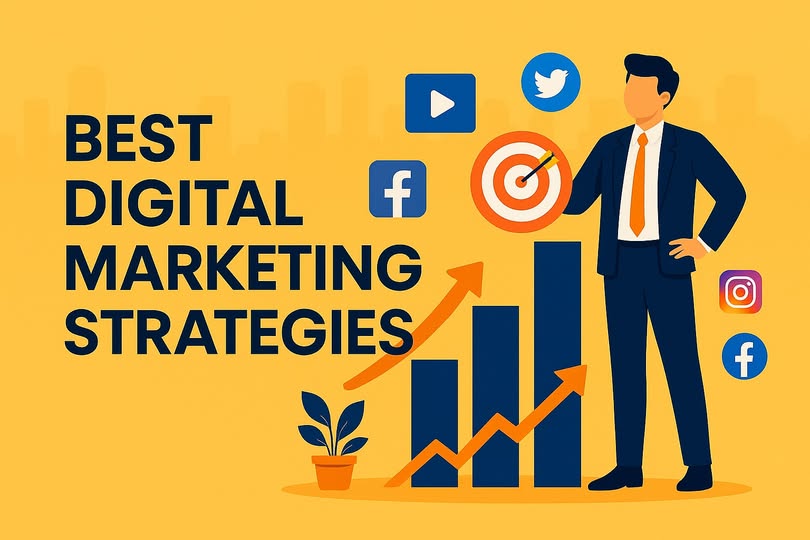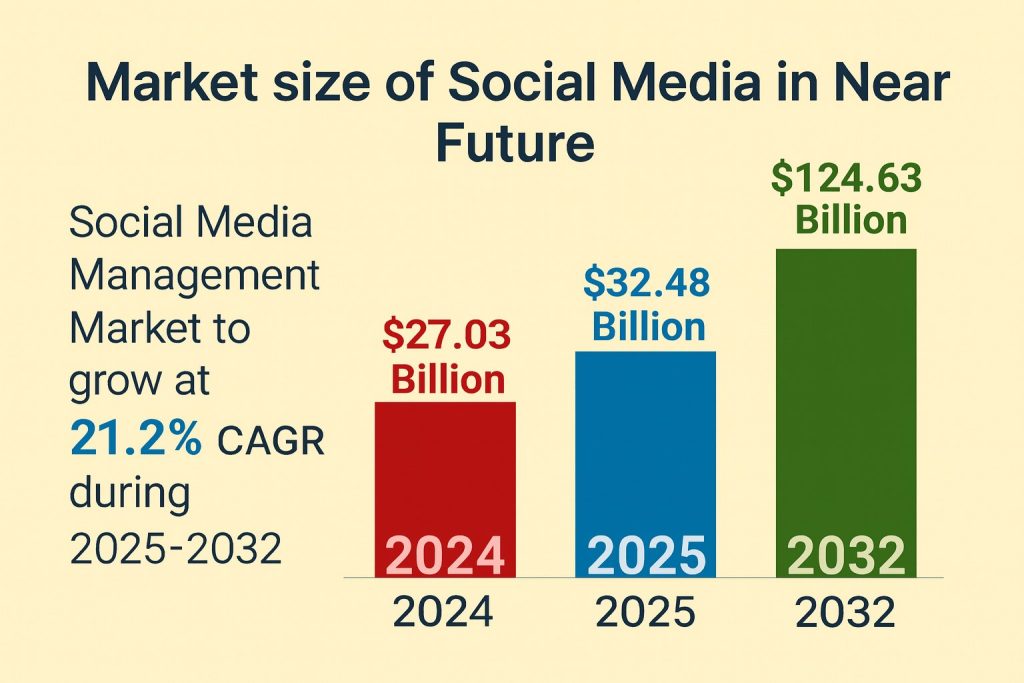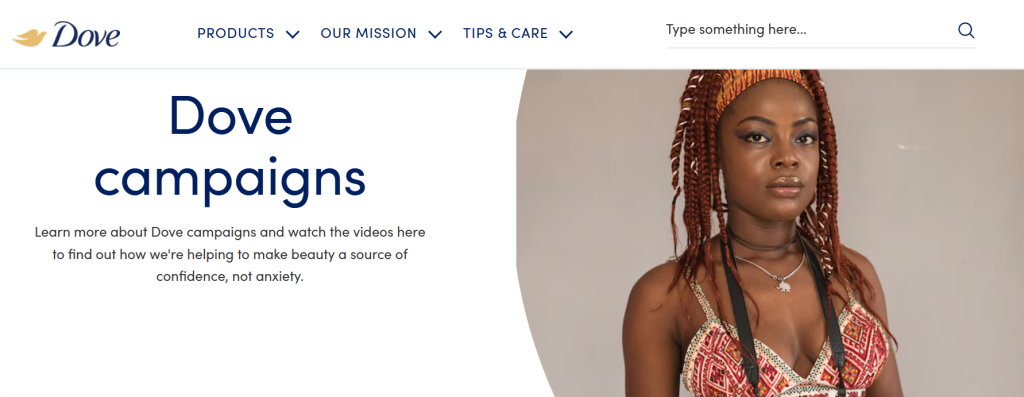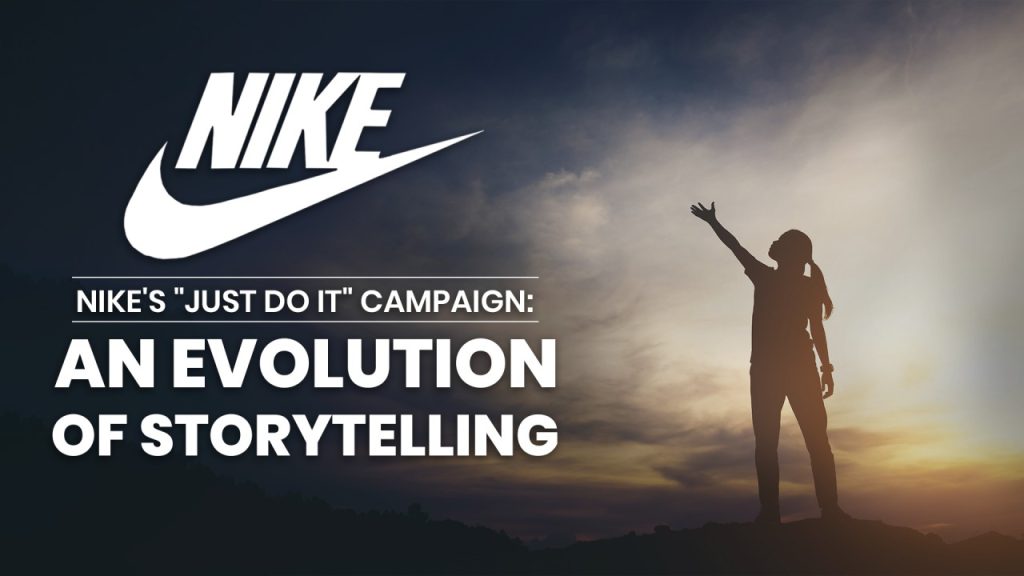In my research, I found that digital marketing has become the backbone of modern business growth, and it continues to evolve at an extraordinary pace. Businesses today cannot afford to ignore digital transformation, especially when customer journeys are shaped by online channels, AI-driven personalization, and global competition.
To keep pace, organizations must not only adopt strong strategies but also continuously refine them with changing consumer behavior and technological advancements. As covered in core digital marketing trends, the digital landscape is shifting rapidly, and strategies must adapt to remain competitive.

Similarly, insights from Future of AI in Digital Marketing show that artificial intelligence is already reshaping how campaigns are executed, measured, and scaled. At the same time, businesses must remain cost-conscious, which is why adopting Affordable PR Strategies is an essential component of any long-term business growth plan. The best digital marketing strategies are not simply about tactics — they are about aligning tools and campaigns with broader business objectives, creating visibility, driving engagement, and generating measurable results. In this article, we will explore the most effective strategies for today’s businesses, from content and SEO to paid media, social platforms, and AI-driven marketing.
What is a Digital Marketing Strategy?
Digital marketing strategies are structured plans that businesses use to promote their products, services, or brand through online channels. They combine techniques like search engine optimization (SEO), content marketing, social media engagement, paid advertising, influencer collaborations, and email campaigns to reach targeted audiences. Unlike traditional marketing, digital strategies allow precise targeting, real-time data tracking, and measurable results.
The purpose of a digital marketing strategy is not only to attract new customers but also to nurture existing relationships, to build brand awareness, and drive long-term growth. With the rise of AI, personalization, and mobile-first behavior, strategies must be adaptive and customer-centric. Successful approaches align with business goals, ensuring that every campaign supports sales, visibility, and brand credibility. In today’s competitive environment, digital marketing strategies are essential for staying relevant, engaging customers, and turning online interactions into meaningful business outcomes.
Why Digital Marketing Strategies Matter in Today’s Business Landscape
Digital marketing strategies are no longer optional—they are essential. The consumer journey has shifted dramatically from offline to online, with the average buyer researching products, reading reviews, and engaging with brands digitally before making decisions. This shift makes brand visibility across digital channels a requirement rather than a luxury.
In the past, marketing efforts might have been limited to print, radio, and local advertising. Today, businesses compete in a global marketplace where every company, from small startups to large corporations, has the opportunity to reach audiences worldwide. A bakery in a local town can sell specialty goods internationally, while a small SaaS provider can attract clients from across continents—all thanks to effective digital strategies.
Strong digital marketing strategies integrate branding, customer acquisition, lead nurturing, and customer retention into a unified ecosystem. A customer might first encounter your brand via social media, explore your website through SEO, join your mailing list through a lead magnet, and finally convert after seeing a well-timed retargeting ad. Each step in this journey is interconnected, demonstrating why businesses need a cohesive digital approach rather than fragmented efforts.
Consider the success of companies like Airbnb and Dollar Shave Club, which leveraged digital-first strategies such as video storytelling, viral campaigns, and targeted social media to grow from small startups into global brands. Their journeys highlight how carefully planned digital marketing is not only powerful but transformative.
What are the Most Powerful Digital Marketing Strategies?
Let’s explore some of the most effective digital marketing strategies that consistently deliver results, strengthen your online presence, and create valuable opportunities to attract and convert qualified leads for your business growth.
Content Marketing Strategies
Content marketing remains the beating heart of digital success. At its core, content marketing focuses on delivering valuable, relevant, and consistent content that attracts and engages a defined audience. By establishing authority and trust, content marketing strategy helps businesses organically build long-term relationships.
Different forms of content serve different purposes. Blogs are excellent for SEO and thought leadership, case studies demonstrate real-world success, and long-form guides establish expertise. Video storytelling is one of the most engaging content forms, with platforms like YouTube and TikTok driving brand awareness through visually rich narratives. Podcasts, on the other hand, cater to audiences who consume content on the go, giving brands a voice in people’s daily routines.
Evergreen content, such as “how-to” guides and pillar articles, provides continuous value over time. This content can serve as the foundation of a “pillar-cluster” model, where a central topic is supported by detailed subtopics, creating SEO-rich ecosystems that improve visibility and navigation. Storytelling plays an equally critical role in content marketing. Narratives that resonate with consumer emotions are more memorable and lead to stronger brand loyalty.
Ultimately, content marketing is not just about producing articles or videos—it’s about tying content into broader inbound marketing and demand generation. By focusing on what the customer values, businesses can attract audiences naturally while reducing reliance on expensive advertising.
SEO and Search Engine Visibility
Search engine optimization (SEO) remains a cornerstone of the best digital marketing strategies because it drives long-term, sustainable visibility. When done correctly, SEO ensures that your business is discoverable at the exact moment consumers are searching for solutions.
SEO begins with keyword research, but modern strategies go far beyond keyword stuffing. Semantic search and user intent have become critical factors, with search engines prioritizing context and relevance over exact-match terms. Businesses must therefore produce high-quality content that directly answers user queries.
On-page optimization involves crafting compelling meta titles and descriptions, using headers strategically, and optimizing images with alt text. Off-page SEO, particularly link-building, helps build authority and trust signals. Technical SEO—such as improving site speed, ensuring mobile responsiveness, and maintaining a clean site architecture—is equally important in meeting Google’s ranking requirements.
Local SEO deserves special mention for businesses targeting regional audiences. Optimizing Google Business Profiles, encouraging customer reviews, and building local citations help companies win local search visibility. With the rise of voice search and AI assistants, businesses should also consider conversational queries and long-tail keywords in their SEO strategies.
Google’s E-E-A-T framework (Experience, Expertise, Authoritativeness, and Trustworthiness) underscores the importance of credibility in ranking. By focusing on expertise-backed content and transparent branding, businesses can build the authority needed for higher visibility.
Unlike paid advertising, SEO builds compounding returns. A strong SEO strategy today can drive leads for years, making it one of the smartest long-term investments.
Social Media Marketing
Social media is where brands become human. Platforms provide not just visibility but also direct engagement with audiences. However, effective social media marketing is about more than posting content—it’s about tailoring strategies to each platform’s unique strengths.
See the total market size of Social media platforms

Facebook remains a powerhouse for community building, especially for groups and events. Brands can foster loyal communities, host live sessions, and use Facebook Ads to target precise demographics.
Instagram is ideal for visual branding. High-quality photos, reels, and stories help brands showcase products and lifestyles, while influencer collaborations amplify reach. Consistency and aesthetic coherence play a critical role here.
LinkedIn is the go-to for B2B marketing. Thought leadership articles, industry insights, and professional networking make it an essential platform for companies targeting businesses or professionals. LinkedIn Ads are particularly effective for niche targeting in industries like tech, finance, and healthcare.
TikTok has become the center of viral content. Short-form, creative videos allow brands to reach younger demographics and drive massive organic engagement. Brands like Duolingo and Ryanair have mastered TikTok humor to create viral campaigns.
X (formerly Twitter) serves as a platform for thought leadership, real-time engagement, and quick updates. Businesses can use it for customer service, trending conversations, and brand personality.
Ultimately, social media success is less about vanity metrics like follower counts and more about engagement, storytelling, and user-generated content. Authentic interactions consistently outperform polished but disconnected campaigns.
Paid Advertising Strategies
Paid advertising complements organic efforts by delivering immediate visibility. Whether through Google Ads, Meta Ads, or LinkedIn Ads, paid campaigns allow businesses to reach targeted audiences with precision.
Advertising models such as CPC (Cost Per Click), CPM (Cost Per Mille), and CPA (Cost Per Acquisition) each serve different objectives. CPC works well for lead generation campaigns, CPM is effective for brand awareness, and CPA aligns with performance-based marketing. Retargeting campaigns are particularly powerful because they target users who have already shown interest, increasing conversion rates.
Paid ads excel when businesses need quick results, such as during product launches or seasonal campaigns. However, they work best when integrated with long-term strategies like SEO and content. For example, paid campaigns can drive initial awareness, while content nurtures leads into long-term customers.
Case studies show how e-commerce companies successfully scale by running product-specific ads with retargeting, while B2B firms leverage LinkedIn Ads to connect with decision-makers in niche industries.
The key to success is clear targeting, compelling ad creatives, and continuous optimization through A/B testing. Paid advertising is powerful, but without measurement and refinement, it can quickly become costly.
Search advertising leads internet ad spendings – Ad Market size
Over the past two decades, Google has demonstrated how profitable the online search industry can be, earning the company well over $300 billion in revenue. By 2026, search advertising spending in the United States alone was projected to exceed $88.8 billion, while global expenditures were estimated to surpass $279 billion, reflecting the immense value and dominance of search as a digital marketing channel.

Email Marketing and Automation
Email marketing continues to be a powerhouse in digital marketing, delivering up to $36 return for every $1 spent—a 3,600% ROI that few channels can match. When combined with smart personalization, audience segmentation, and automation, it becomes a growth engine that not only drives conversions but also nurtures long-term loyalty. Personalized campaigns achieve 3x higher engagement rates compared to generic blasts, proving that relevance fuels results.

Personalized campaigns outperform generic blasts. Businesses can segment their email lists based on demographics, interests, or engagement history. Automated drip sequences ensure that customers receive the right message at the right time—whether it’s a welcome email, a product recommendation, or a re-engagement campaign.
Newsletters build long-term trust by delivering consistent value. They allow brands to stay connected while showcasing thought leadership and updates. Onboarding emails help guide new customers, while transactional emails can include cross-sell or upsell opportunities.
Modern email marketing integrates with CRM tools and uses analytics to track open rates, click-through rates, and conversions. Combined with AI-powered personalization, email remains a highly cost-effective channel that deepens customer relationships.
Influencer Marketing and Micro-Influencer Collaborations
Influencer marketing has grown beyond celebrity endorsements into a highly strategic digital channel. Micro-influencers, in particular, have become powerful allies for brands because of their authenticity and closer relationships with niche audiences. Businesses that want to tap into this trend can learn how to find micro-influencers who align with their brand values and connect with targeted communities, driving higher engagement and more meaningful results.
Consumers trust influencers who feel relatable and authentic, often more than polished advertisements. Collaborating with micro-influencers allows businesses to reach targeted communities without the high costs of celebrity campaigns.
The best influencer campaigns are based on alignment, not just reach. Brands must carefully vet influencers to ensure values and audiences align. Measuring ROI involves tracking not only engagement but also conversions and long-term brand sentiment.
Examples abound in industries such as fashion, beauty, fitness, and even B2B sectors where thought-leaders and industry experts act as influencers. By focusing on credibility and relatability, businesses can amplify their message effectively.
Influencer Marketing Market Size
The influencer marketing industry is poised for dramatic expansion over the coming years. Analysts estimate its value will climb from around USD 31 billion in 2025 to nearly USD 121.8 billion by 2030, equating to a compound annual growth rate (CAGR) of about 31.4%. Mordor Intelligence This surge reflects a shift in how brands allocate marketing budgets—no longer viewing creator partnerships as experimental spending but as essential acquisition and retention channels. Mordor Intelligence+1 Concurrently, the market for influencer marketing platforms (tools enabling discovery, campaign management, analytics, etc.) is also scaling rapidly, with forecasts projecting it will reach USD 97.55 billion by 2030, growing at a CAGR of 23.3% from 2025 onward. Grand View Research+1

Statista influencer marketing Market size data.
This twin momentum—brands investing deeply in influencers and adopting sophisticated software—underscores how influencer marketing is evolving from niche tactic to mainstream pillar in digital strategy.
PR and Reputation Management
Public relations and digital reputation management remain core parts of digital strategies. As explained in Affordable PR Strategies, PR can be impactful even on a budget, through online press releases, thought leadership articles, and strategic media outreach.
In today’s world, a brand’s reputation can change overnight. Monitoring online mentions, reviews, and social chatter is crucial. Digital PR strategies must also include crisis management planning, ensuring businesses can respond quickly to negative publicity.
Testimonials, case studies, and user reviews serve as powerful social proof. By proactively building positive visibility and maintaining transparency, businesses protect their credibility while fostering trust.
AI-Powered Personalization and Data-Driven Marketing
Artificial intelligence is revolutionizing digital marketing. From personalized product recommendations to AI chatbots, businesses can now engage customers at scale with unprecedented precision.
As outlined in Future of AI in Digital Marketing, AI tools enable predictive analytics, customer journey mapping, and automated ad bidding. Real-world examples include Netflix’s recommendation engine, Amazon’s personalized shopping suggestions, and AI-driven chat support on e-commerce sites.
Data-driven marketing ensures campaigns are optimized for relevance and timing. AI-powered personalization allows brands to deliver unique experiences for every customer segment, improving engagement and conversions.
For businesses that want to stay competitive, embracing AI is no longer optional—it is a necessity.
B2B Digital Marketing Strategies
B2B (Business-to-Business) digital marketing strategies focus on building long-term relationships and demonstrating expertise to decision-makers within organizations. These strategies prioritize value-driven content and measurable ROI.
- Content Marketing: Publish case studies, whitepapers, and thought leadership articles to showcase expertise.
- LinkedIn Marketing: Use LinkedIn for lead generation, networking, and professional branding.
- SEO & SEM: Optimize for industry-specific keywords to capture high-intent business traffic.
- Email Marketing: Send targeted campaigns, product updates, and nurturing sequences.
- Webinars & Virtual Events: Engage prospects with knowledge-sharing and interactive sessions.
- Account-Based Marketing (ABM): Personalize campaigns for specific high-value clients.
B2B strategies emphasize trust, authority, and long sales cycles, making educational and data-driven approaches essential.
B2C Digital Marketing Strategies
B2C (Business-to-Consumer) digital marketing strategies focus on driving quick engagement, emotional connections, and sales conversions from individual customers.
- Social Media Marketing: Use Instagram, Facebook, TikTok, and YouTube for storytelling and brand awareness.
- Influencer Marketing: Collaborate with creators to reach niche audiences authentically.
- Content Marketing: Produce blogs, videos, and short-form content to attract and retain consumers.
- SEO & Local SEO: Optimize for broad and location-specific searches to drive traffic.
- Paid Advertising (CPC/CPM): Use targeted ads for promotions and seasonal campaigns.
- Email Campaigns: Deliver personalized offers, product launches, and loyalty rewards.
B2C strategies rely on emotional appeal, fast purchase decisions, and creating memorable brand experiences.
Best Digital Marketing Strategies Examples
The best digital marketing strategies are often demonstrated by global brands that have mastered the art of connecting with audiences through creativity, consistency, and innovation. These companies go beyond traditional advertising by leveraging storytelling, personalization, and purpose-driven campaigns to build loyalty and engagement. From harnessing the power of social media to integrating data-driven insights and cultural relevance, leading brands illustrate how strategy and execution come together for lasting impact. By studying their approaches, businesses of all sizes can learn how to craft campaigns that not only capture attention but also inspire meaningful customer relationships.
Unilever – Sustainability and Purpose-Driven Campaigns
Unilever’s digital marketing approach integrates purpose-driven branding with sustainability as a central message. Brands under its umbrella, such as Dove, Ben & Jerry’s, and Lifebuoy, use digital campaigns to address social issues while building customer trust. For instance, Dove’s “Real Beauty” campaign challenged beauty stereotypes and became a viral movement online.

Unilever invests heavily in content that resonates with conscious consumers, emphasizing inclusivity, ethical sourcing, and environmental responsibility. By using data analytics and AI-driven insights, Unilever tailors campaigns to specific audiences across markets. Its strategy combines storytelling with measurable impact, making sustainability a competitive advantage. Unilever’s consistent approach proves that modern consumers connect deeply with brands that align with their values, helping it stand out in both developed and emerging markets.
Campaign Result as followings –
- The most watched online ad ever, according to Unilever, with over 163 million views globally.
- 4.6 billion media impressions; reached 275,000 followers on Google+
Drawing from two decades of experience and feedback from more than 33,000 individuals across 20 nations, Dove has undertaken the largest global study ever led by a beauty brand to uncover the true perceptions of beauty and the challenges people encounter around it.
Coca-Cola – Content Personalization and Engagement
Coca-Cola’s digital marketing strategy centers on personalization, engagement, and emotional connection. Campaigns such as “Share a Coke” encouraged consumers to find bottles with their names, sparking massive user-generated content across social media. Coca-Cola uses interactive storytelling, music, and cultural themes to stay relevant with younger audiences while reinforcing its legacy brand image.

Image from Coca Cola Website
By combining global campaigns with locally adapted strategies, Coca-Cola ensures cultural resonance worldwide. Its digital presence emphasizes community participation through contests, hashtags, and influencer partnerships. Coca-Cola’s marketing illustrates how a brand can evolve with trends while staying true to its core values—happiness, togetherness, and refreshment. The strategy not only boosts sales but also keeps the brand at the heart of cultural conversations across markets.
Nike – Storytelling and Emotional Branding
Nike has built one of the most powerful digital marketing strategies by focusing on storytelling that connects emotionally with its audience. Through campaigns like “Just Do It”, the brand inspires consumers to associate fitness and determination with personal achievement. Nike leverages social media, influencer collaborations, and athlete endorsements to reach both mass and niche markets. Its digital platforms highlight real stories of perseverance and inclusivity, positioning Nike as more than just a sportswear brand—it’s a movement.

Image Source: Internet
Nike also integrates data-driven personalization in its apps and e-commerce, providing tailored product recommendations. This blend of emotional storytelling and technology has allowed Nike to maintain global relevance and cultivate long-term loyalty among millions of consumers.
Measuring Success: KPIs, Analytics, and ROI
No strategy is complete without measurement. Tracking performance ensures that digital marketing efforts deliver value and align with business goals.
Key performance indicators (KPIs) such as website traffic, conversion rates, customer acquisition cost, and lifetime value provide insights into effectiveness. Analytics tools like Google Analytics, HubSpot, and CRM dashboards allow businesses to evaluate performance in real time.
ROI measurement is particularly important for justifying investments in digital campaigns. Businesses must regularly refine campaigns based on data, ensuring continuous improvement.
By combining analytics with a culture of experimentation, brands can remain agile in a constantly evolving landscape.
Key Takeaways
The best digital marketing strategies are not fixed—they evolve. What works today may shift tomorrow as technology, platforms, and consumer behavior change. To succeed, businesses must adopt adaptable, integrated, and data-driven approaches.
Content, SEO, social media, paid advertising, email, influencer marketing, PR, and AI each play a unique role, but they work best when aligned with broader business objectives. By staying updated on Digital Marketing Trends and blending creativity with analytics, businesses can ensure their efforts remain relevant, measurable, and impactful.
Ultimately, the best strategy is one that aligns with your unique goals, resonates with your audience, and delivers measurable organic business growth. Digital marketing is not a one-time effort but an ongoing process of learning, testing, and refining a process that will define successful businesses for years to come.

